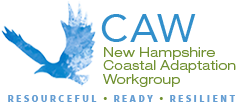
August 5, 2024
By Amy Sauber (Piscataqua Region Estuaries Partnership; copyedited by Miles Keefe (NH Sea Grant Doyle Fellow)
When was the last time you thought about love and climate work? Not simply our love and passion for doing the work, but the essential concept of love and caring for one another? Evolving our practice was a prominent theme of NH CAW’s 11th Climate Summit, one that emerged out of an opportunity to how we approach climate work. Keynote speaker Kate O’Brien, Founder & Principal Consultant at Catalyst Collaborative, captivated us by framing our climate work as fundamentally about people, interdependence, and connection–love.
Held at Strawbery Banke Museum’s Visitor’s Center in Portsmouth and within the traditional lands of the Abenaki people, the 2024 Climate Summit brought together around 90 people. This a dynamic community who represented local, regional, state, and federal agencies, artists, as well as representatives from non-profit organizations, private business, university faculty, and students. Think artists, social workers, community builders of Indigenous knowledge, wetland scientists, and cutting-edge geospatial analysts–and more–all in one room! This was CAW’s first in-person summit since before the pandemic, and CAW is growing. About half of participants were first-time attendees. The format featured a keynote presentation followed by 11 lightning presentations, as well as new, interactive formats: art exhibits, panel discussions, exercises, and a popup session in which attendees shared a few words about a new project or collaborative opportunity. In addition to evolving our practice, the Summit featured themes of advancing knowledge in the field and catalyzing principled action (rooted in CAW’s 5-Year Intentions).
The day before this year’s Summit began with a 90-minute Guided Walking Tour led by the Black Heritage Trail of NH, an experience that set the tone for perspective taking. A concept introduced to us by Kate O’Brien, perspective taking involves being attuned to others’ lived experiences, valuing different approaches, investing in deeper connections, and tailoring our offerings to meet others’ needs. We expect a rich range of takeaways from this year’s summit. Below is one perspective to start that conversation.


Strawbery Banke (left); Summit participants at the Black Heritage Trail NH guided walking tour (right)
*Sankofa is a word in the Twi language (a variety of Akan) which is spoken in central and southern Ghana. Translated to English, sankofa means “go back and get it.” Sankofa may also be represented through an image: a bird that turns backward while carrying an egg in its beak; its feet face forward. In the context of the tour, sankofa is a concept encouraging participants to look back as a means to look .
TAKEAWAYS
#1 | Show up with love, humility, and care
Kate O’Brien’s evocative keynote address encouraged us to draw connections between love and climate work, inspiring us to approach our efforts with our own self-awareness growth. Climate work is urgent, and it starts with people and relationships. For our efforts to be impactful, our relationships must be founded in love, empathy, and curiosity.

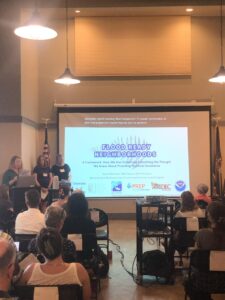
Alyson Eberhardt facilitates Q&A with Kate O’Brien (left); Abigail Lyon introduces Kirsten Howard and Alyson Eberhardt to present about the Flood Ready Neighborhoods project (right)
In fact, the word love (or its image) was featured throughout the day. In a provided statement, Senator Maggie Hassan called our coastal community “beloved.” Rodney Rowland of Strawbery Banke Museum described a challenging historic preservation and flood resilience plan that involved replacing a foundation on the historic Salt Box. And why? Because the kids love it. Presenters described what love looked like in artistic ways. Artist and PhD candidate Jo Field created a large-scale weaving: blue and red threads represented temperature of a given year and small tags indicated an event in her life. To create takes love.
We honored and celebrated two leaders with the Community Champion Award: Kristen Murphy (Conservation and Sustainability Planner, Town of Exeter) and Jason Bachand (Town Planner, Town of Hampton). The CAW Community Champion Award recognizes outstanding local leaders who are putting climate-related research and outreach to work in their communities. While much can be said for the diverse, powerful impacts Murphy and Bachand have enacted in Exeter and Hampton (respectively), their legacies are rooted in the fact that they both continue to show up with love, humility, and care for their communities.
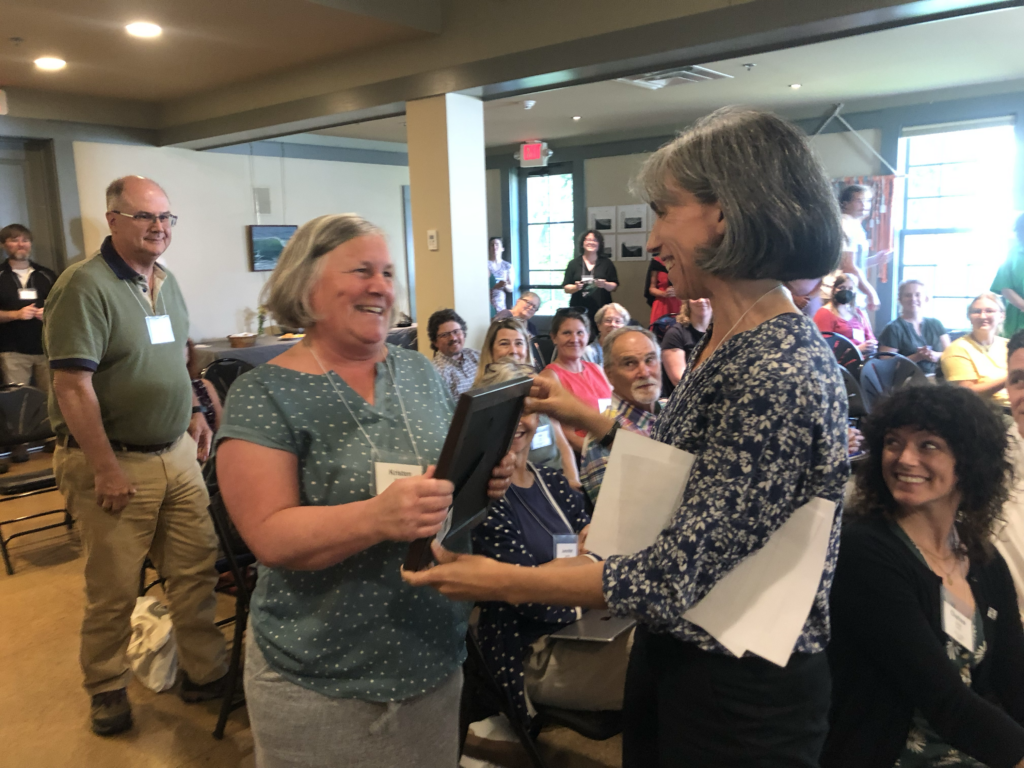
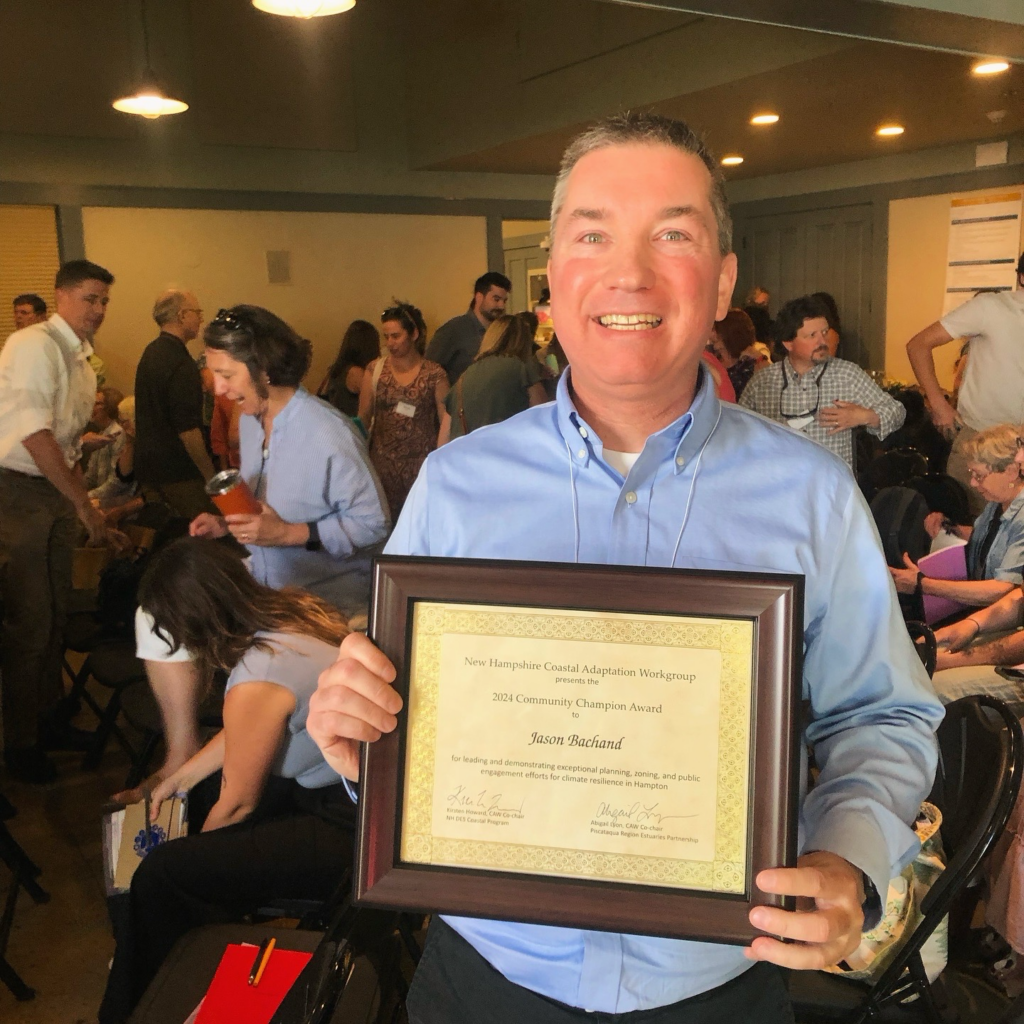
Lynn Vaccaro presents Kristen Murphy with the Community Champion Award (left); Jason Bachand with his Award (right)
Love was on display at the Climate Summit. But not in the way you might first imagine it. There was fellowship at lunch over great food, standing with a friend in front of artist Elise Sullivan’s photography. We asked questions that went deeper, celebrated each other’s stories, shared an intention with the person in the seat adjacent. We participated in a breathwork mindfulness exercise with an audience full of people. We were asked to pay attention to our care for each other.
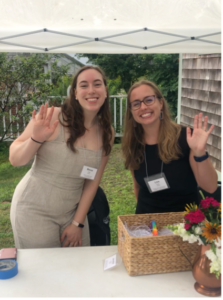
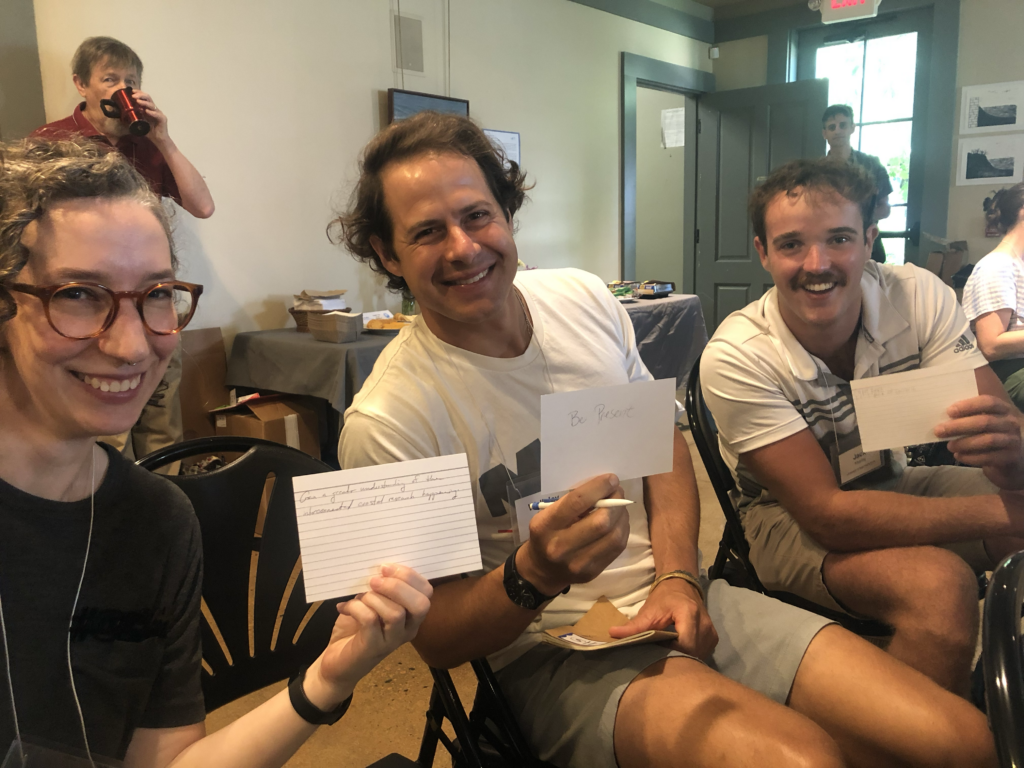
Becca Katz and Lisa Wise welcome attendees (left); participants enjoy an interactive activity (right)
#2 | Make time to pause, learn, and grow
There’s a lot to learn. A lot of connections to make. What happens when we pause and ask ourselves who else is a part of this story?
Perhaps they are artists, like Jo Field, Billy Karugira, Elise Sullivan. In a panel led by artist and Flood Ready Neighborhoods Program Coordinator Tori Bamford, they discussed art as a way of telling stories. Our communities have a lot of stories to tell. What climate stories do they have?
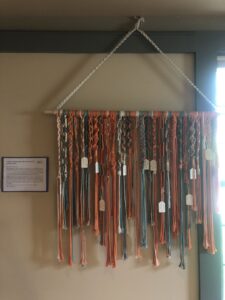
Art by Jo Field

Art by Charlotte Thompson
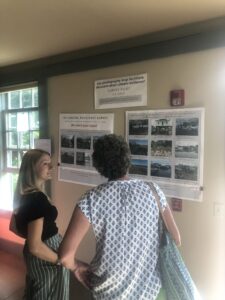
Art by Elise Sullivan

Tori Bamford (left) facilitates a panel of artists
Perhaps they are located more regionally, beyond our town. Dr. Knott of HydroPredictions helped us make connections between groundwater and sea level rise and how thinking regionally about these issues is the way to tackle them. Or maybe they are in our own communities, but instead of relying upon what we know, we ask, What if…, as Jay Diener and Rayann Dionne of the Seabrook-Hamptons Estuary Alliance guided us to imagine with questions like: What if my local community had a plan for tax revenue loss due to sea level rise?
Learning can be both exciting and daunting–at times vulnerable. Throughout several presentations we learned from leaders who got comfortable with being uncomfortable. Put another way: traditional methods alone aren’t going to cut it, and so let’s find a better way.
Coastal Ecosystems Extension Specialist Dr. Alyson Eberhardt and NHDES Resilience Program Coordinator Kirsten Howard led us through new ways of connecting with communities impacted by coastal flooding through the Flood Ready Neighborhoods Project. They shared examples of leading with relationship building, including showing up at weekly Bingo. Start there and get to know people. In another presentation by anthropological archaeologist Dr. Meghan Howey and head speakers of the Cowasuck Band of the Pennacook-Abenaki people Denise Pouliot and Paul Pouliot talked about the necessity of cultivating authentic relationships–in their case, one developed over 14 years with “a chair at the table.” It was their authentic relationship, guided by growth, that led to a pilot program to record Indigenous sites before they’re impacted by sea-level rise.
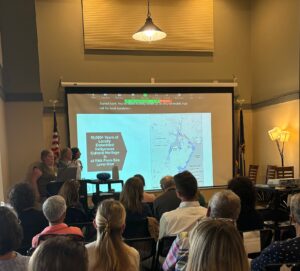
Denise and Paul Pouliot and Meghan Howey present their work
Sometimes growing is learning about connections we hadn’t thought of before. For example, forgotten salt marsh histories as a starting point to repair them–led by Research Associate Professor Dr. Burdick–or examining the relationship between conservation and flood resilience, led by PhD candidate Michal Záhořík.
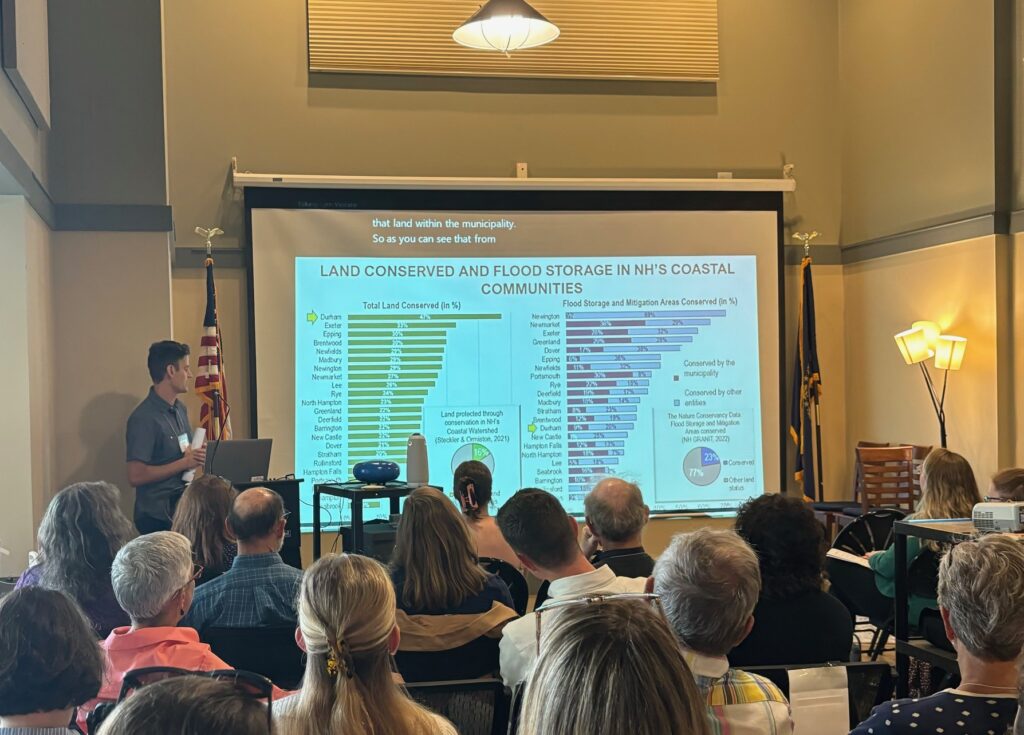
Presentations by Michal Zahorik (left) and David Burdick (right)
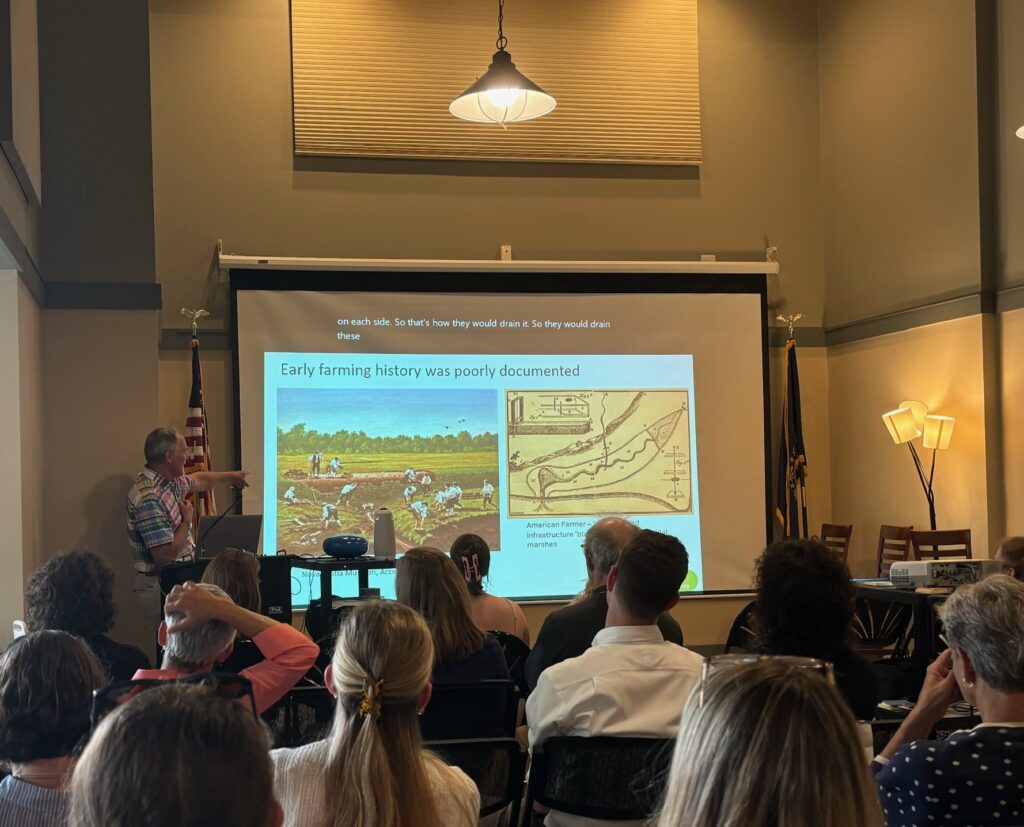
Kate O’Brien’s address meandered in our minds throughout the day. The path to growth is one in which we emerge from our comfort zone and into fear and learning. Only then can we access the growth zone. We might end up with more questions than answers. Growing pains. It’s real. But in the end, they take us closer to a place in which everyone can belong. Learning how to be a bridge is rewarding, yet challenging work. Making space for perspective taking helps us get there.
#3 | Hope is something you feel and act on
Hope and optimism are not synonyms, Julie Wormser of the Mystic River Watershed Association reminded us. She spoke on her interest in hope, because, in her experience, it has been the motivator to do equitable climate adaptation work. For example, hope becomes action when we start climate resilience plans by talking with communities, not necessarily with what a textbook implies. We could ask, “How would you be impacted most?”
The 2024 Climate Summit demonstrated our ability to become adaptive as a way to be connected. From a location pivot for the conference itself (in less than 72 hours) to the way we go about helping coastal communities with extreme flooding, our capacity for resilience is rooted in love. The thing about hope too, is that it brings out paradoxical challenges–and yet, that process somehow generates more hope, more growth.
Cory Riley, Director of the Great Bay National Estuarine Research Reserve, delivered powerful closing remarks, emphasizing our collective need to do things differently. Our communities depend upon it. Our personal growth depends upon it. Perhaps we can get started by tapping into an artist-like imagination that’s inside all of us or the curiosity of what if possibilities. “It’s never going to be a linear path; it’s going to be a meander,” she reminded us. And with the power of hope, that we’re here to make things better.
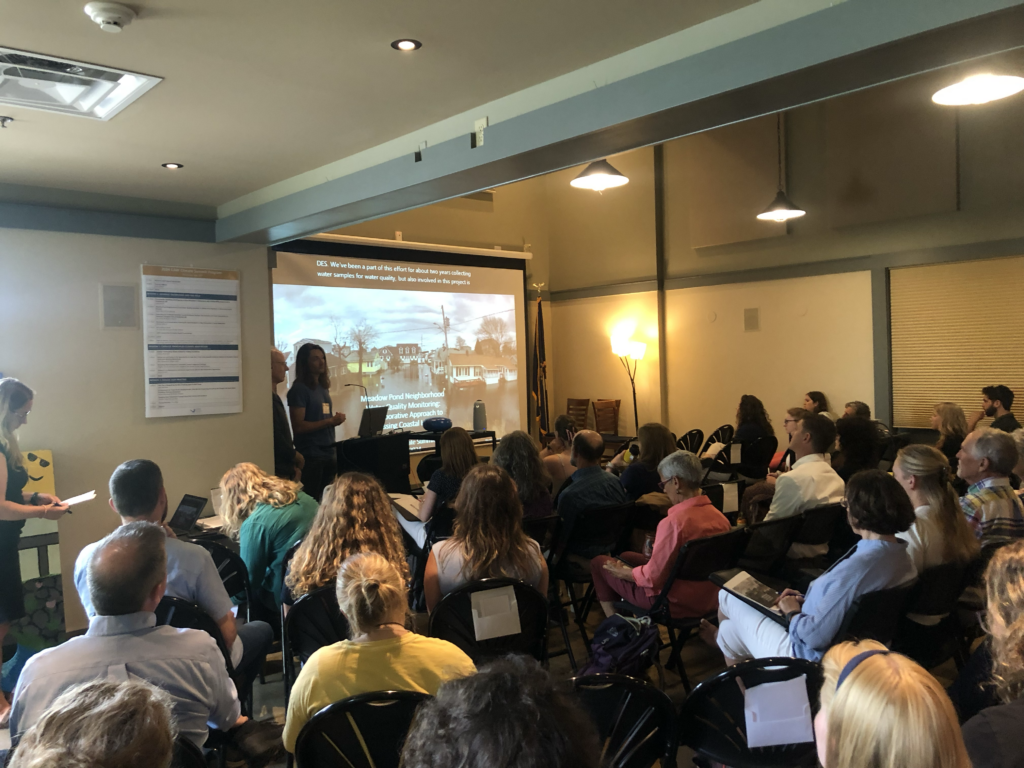

Presentation by Tom Bassett and Aidan Barry (left) and keynote by Kate O’Brien (right)
Want to reach out to a Summit participant? Ready to get started on the work ahead? You can find the slides, links to recordings, and resource packet for the 2024 CAW Climate Summit at the Resources from Past Summits page.
